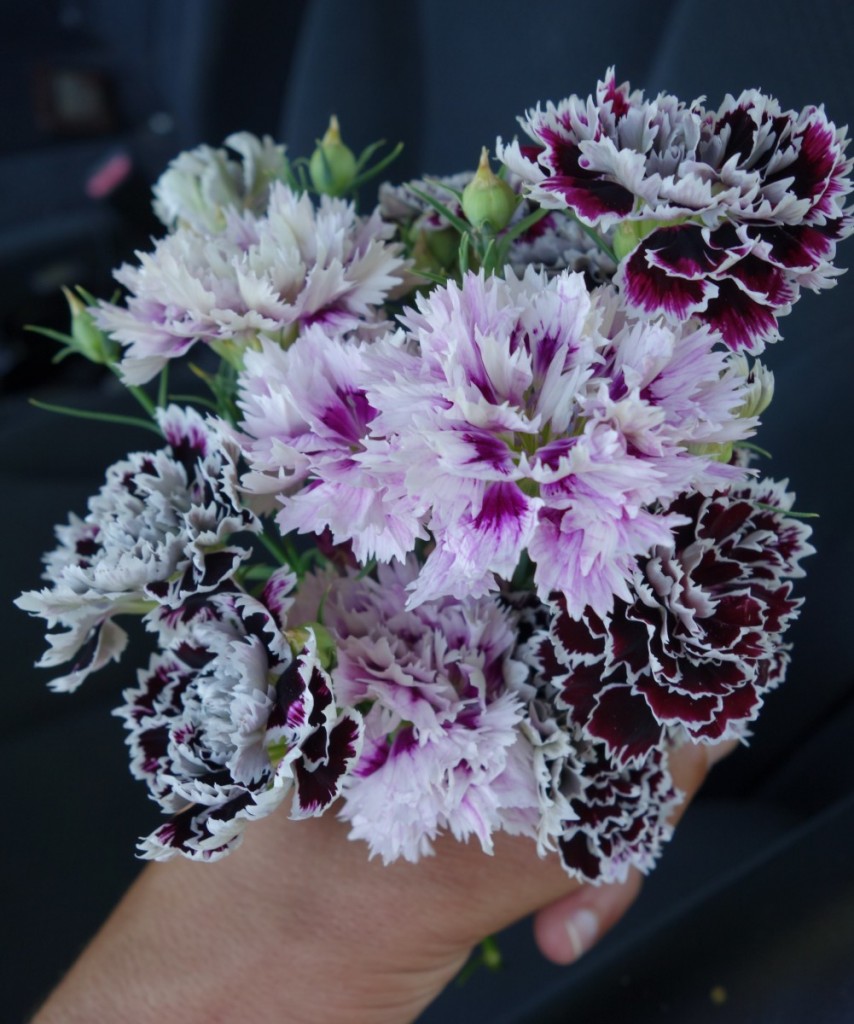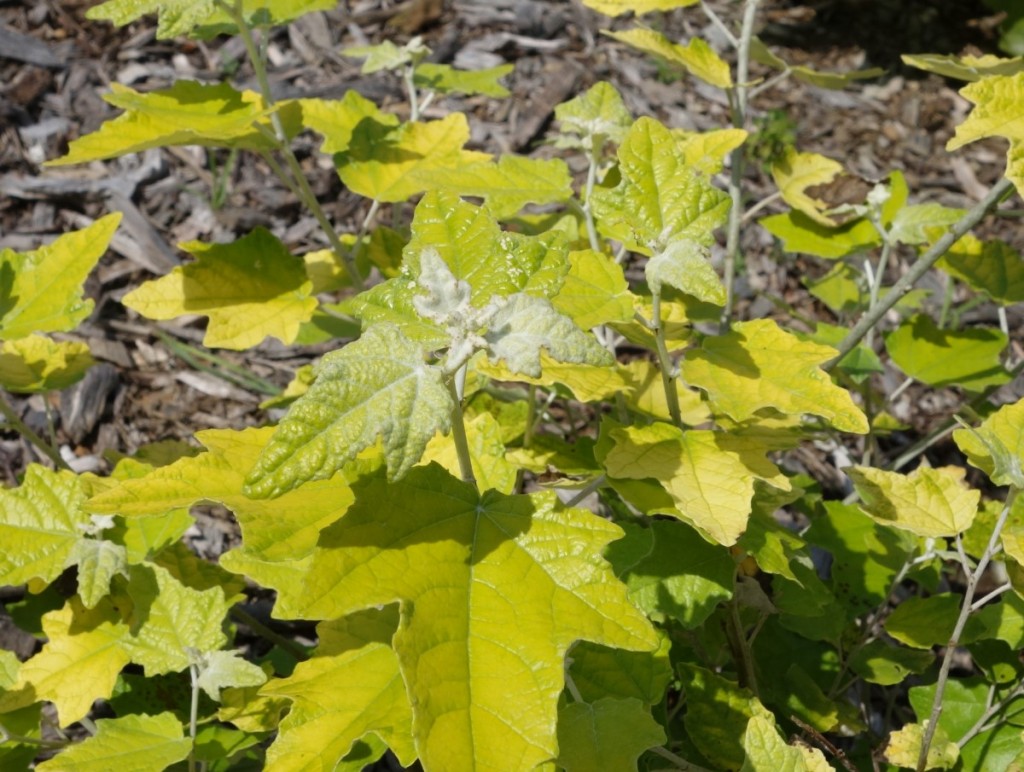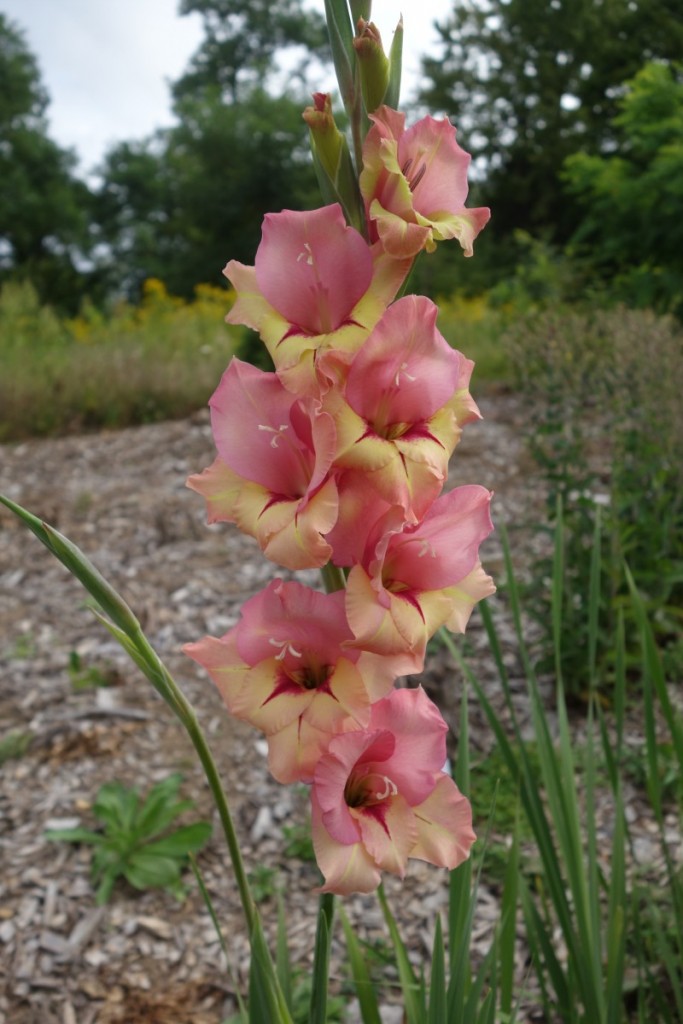For normal people, I gather, New Years is all about making resolutions to loose weight or spend more quality time with family. For me, New Years means reviewing everything I grew in the garden in the past 12 months and deciding what I love and what I’m over. I always try lots of new things, and so I thought I’d share my top new favorites for 2015.

The only Dianthus chinensis I’d grown before are the modern selections which are about three inches tall with huge flowers and as ugly as can be (in my opinion) but ‘Chianti’ and ‘Victoriana’, two charming old-fashioned seed strains won my heart in a big way this year. Annuals, very easy from seed, and blooming all summer with these wonderfully romantic double blooms that made wonderful, long-lasting cut flowers. I’m hoping they decide to self-sow and return next year.

Poplars are, generally, terrible trees. Weak wooded, short-lived, and weedy with few redeeming characteristics. But I bought this Golden Poplar, Populus alba ‘Richardii’, on a whim, and am absolutely thrilled with it. The foliage stays this bright, beautiful shade of yellow all summer, even in full sun (or at least what passes for full sun in cloudy Michigan) without burning. Great in the garden, and cut branches look amazing in a vase. I suppose it could eventually get large, but I’m planning to keep pruning it back hard to the ground to force it to push out lots of lush, long new stems of bright leaves.

I love breeding plants, and for the past few years I’ve been deeply obsessed with breeding gladiolus… I had a lot of new seedlings this year, but this one, a cross between the wonderful variety ‘Little Comet’ and one of my unnamed hardy varieties I call h2.3, is my favorite of the year. I just LOVE those colors, and love that the come on a strong stem that doesn’t need staking. If it keeps performing well, I’d love to make it available for sale in a few years.
Finally, I forgot to get a picture of this, but I have a new favorite tomato! For years, my favorites have unequivocally been ‘Black Krim’ for large tomatoes, ‘Matt’s Wild Cherry’ for cherries, and ‘Opalka’ for paste, but ‘Black Krim’ has been replaced! My new favorite: ‘Sweet Scarlet Dwarf’ This plant combines a wonderful compact, tidy, attractive growth habit with big yields and really terrific flavor. It isn’t widely available (the only source I know is Heritage Seed Market) but do track down some seeds. You’ll be happy you did.
Now, please, let me know your favorites in the comments so I can expand my shopping list for 2016!
Joseph Tychonievich
Ooh. Will be looking for Sweet Scarlet Dwarf seed sources for good tasting container varieties. Sounds like a winner. My current OP variety in that class is Lime Green Salad, also known as Jolly Elf.
Some info I googled up:
http://tatianastomatobase.com/wiki/Sweet_Scarlet_Dwarf
Joseph – I did not realize you were breeding glads. I started collecting hardy glad species last year and have about 8 now. My goal is to try and breed more color into glads that are at least zone 5 hardy – which is my zone.
I’ve had Gladiolus byzantinum and G. imbricatus for a few years and will use them for breeding this year, while my others bulk up and flower.
Do you have any published references about this kind of breeding? I had found one paper a year ago, but not much else. My main question now is which non-hardy varieties should I start with?
If you ever have excess seed of hardy varieties, I’d love to try them here, in Guelph, Ontario.
I don’t know of papers on the topic. Most ornamental breeding is done in the private sector and rarely publish papers on their work, so you won’t usually find much.
From what I’ve found making crosses so far, and what few records I can find of previous breeding work, it seems like almost all species of gladiolus will interbreed, so I think you should be able to work with whatever non-hardy varieties you want, the choice will simply be which ones have the attributes you want to bring into your hybrid populations.
The plan would be to cross hardy species with non-hardy species to increase color selection and maybe flower size. the nanus series are from such crosses, but they seem to be sterile.
I know of one professor in the the US who has dones some of this breeding. I’ll send the name by message.
That’s a darn nice glad, Joseph. I love what you’re doing. I was shocked to accidentally find that normal, buy-at-the-garden-store glads perennialize in my Columbus, Ohio garden. Some are more vigorous than others, but they even came back after the two polar-vortex winters. Overall, though, the hardy glad ‘Boone’ is my hands-down favorite. Does ‘Little Comet’ have ‘Boone’ parentage. (Although I guess that could be a trade secret! But don’t worry, I’m too lazy to do my own hybridization)
cheers
‘Boone’ is in the ancestry of all my hardy glads — I think for the particular seedling I showed here, it is a grandfather — or maybe great-grandfather. I’d love to look at my records to be sure.